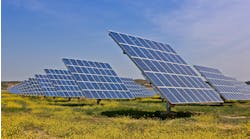The U.S. Department of Energy (DOE) Solar Energy Technologies Office (SETO) and Wind Energy Technologies Office (WETO) announced the Solar Technologies’ Rapid Integration and Validation for Energy Systems (STRIVES) funding opportunity, which will provide up to $31 million for research, development, and demonstration projects to improve power systems simulation software tools and demonstrate new business models for distribution systems operations to integrate and optimize the value of inverter-based resources (IBRs) and distributed energy resources including solar generation, wind generation, energy storage, and other technologies such as buildings and electric vehicles.
Stated in the release, "The large-scale deployment of clean energy technologies is driving a transition to a digitally controlled, decentralized, and distributed electric grid that will require coordination of large numbers of diverse and geographically dispersed assets. New operational tools and methods are needed to coordinate these assets while maintaining a reliable, resilient, and secure electric grid.
"The clean energy transition also introduces new stakeholders to electricity generation, transmission, and distribution, which creates opportunities for new organizational models to provide equitable access and participation in electricity markets."
This funding opportunity announcement (FOA) is part of a collaborative effort by the DOE Office of Energy Efficiency and Renewable Energy (EERE) to issue multiple FOAs totaling more than $100 million for field demonstration projects and other research to support better planning and operations of the electric grid.
Topic Areas
Topic Area 1: Robust Experimentation and Advanced Learning for Distribution System Operators – 8-10 projects, $2.5-3 million each
Projects in this topic area will design and perform field demonstrations of distribution system operator models that consider technology development and the roles of non-traditional stakeholders in potential distribution electricity services and markets.
Topic Area 2: Improved Simulation Tools for Large-Scale IBR Transient and Dynamic Studies – 4-5 projects, $1-2.5 million each
Projects in this topic area will develop and demonstrate software tools and methodologies to improve the ability of power systems engineers to accurately and efficiently model the dynamics of power systems with large amounts of geographically dispersed IBRs.
More information can be found here on energy.gov.



